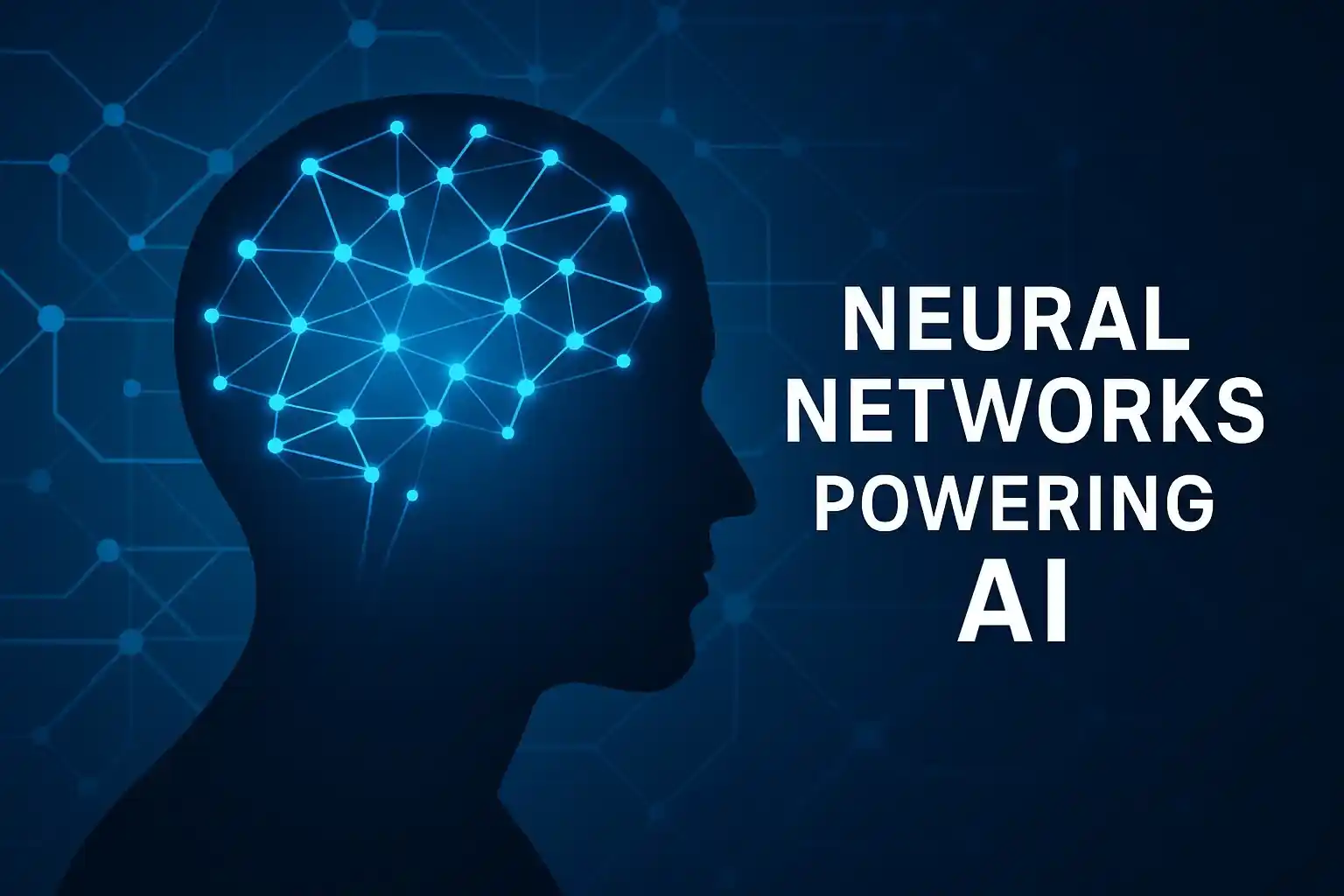Do you ever get the feeling that your smartphone or computer knows you too well? You unlock your phone using Face ID without any issues, even if you’ve gotten a new haircut or are wearing glasses—your phone still unlocks! Google completes a search query for you before you even finish your sentence, and Netflix recommends an unknown show that you end up enjoying about Neural Networks in AI.
Does it seem like pure luck? It’s not.
While you are busy with your regular activities, neural networks are learning from the patterns they observe around them and making accurate predictions, just like humans would!
But the question still lingers: How do they accomplish that?
Artificial intelligence is not just a technology; it is changing the world around us. From voice assistants like Siri to self-driving cars, AI is helping human life in numerous ways. But have you ever imagined how this actually works? It’s all because of neural networks.
What Are Neural Networks?
A neural network is a special type of technology that enables computers to learn data just like the human brain does!
Real-Life Examples of Neural Networks
- Unlocking Your Phone with Face ID:
- AI scans your face and matches every detail. A neural network analyzes features like the distance between your eyes, the shape of your nose, and your jawline.
- Even if you change your hairstyle or wear glasses, AI adapts to these changes over time.
- Google Search Suggestions:
- Google predicts your searches based on millions of past queries.
- It learns from common search patterns, trending topics, and even your own search history to provide the most relevant results.
Neural networks try to think and learn like humans. Just as the human brain can recognize faces, understand language, and make decisions, neural networks replicate these abilities.
How Neural Networks Work
The human brain consists of billions of neurons that process information, helping humans recognize and remember things. In computers, we have artificial neurons connected in multiple layers that help machines recognize patterns, make predictions, and improve over time.
Layers of a Neural Network
- Input Layer – Receives raw data, just like gathering ingredients for a dish.
- Hidden Layers – Processes and refines data, similar to how a chef mixes and cooks ingredients.
- Output Layer – Produces the final result, like serving a perfectly cooked meal.
Through these layers, a neural network can recognize patterns, make smart decisions, and learn from mistakes, just like humans!
Breaking Down Neural Networks
To understand neural networks better, let’s break them into simpler components:
1. Input Layer (Receiving Information)
- This is the starting point where raw data is collected.
- Examples:
- In image recognition, input data consists of image pixels.
- In weather prediction, input data includes temperature, humidity, and wind speed.
Each neuron in the input layer takes small pieces of data and passes it to the next stage.
2. Hidden Layers (Processing Data)
- This is where real learning happens.
- Data moves through multiple layers where neurons perform calculations and refine information.
- Neural networks use weights (important data) and biases (fine-tuning factors) to process information effectively.
- Activation Function: Helps the network focus on meaningful patterns and determine which information is important.
3. Output Layer (Making Decisions)
- Processes and refines information from hidden layers.
- Examples:
- In a spam filter, the output layer decides whether an email is spam or not.
- In a self-driving car, it decides when to stop or move forward.
- Like humans improving skills through practice, neural networks refine their accuracy through repeated learning cycles.
The Future of Neural Networks and AI
1. AI That Learns Like Humans
- AI currently needs massive data to learn.
- Future AI may learn from fewer examples, just like humans do.
2. Quantum Computing – AI on Super Speed
- Quantum computers could solve problems faster and more accurately.
- Examples:
- Predicting financial trends with extreme accuracy.
- Analyzing weather patterns to combat climate change.
3. Neuromorphic Engineering – AI That Thinks Like a Brain
- AI chips that imitate real neurons.
- Benefits:
- No long training times—AI learns instantly!
- Energy-efficient machines that consume less power.
- AI that understands emotions and interacts naturally with humans.
Challenges of Neural Networks in AI
1. AI Needs a Lot of Data
- AI relies on huge datasets to learn.
- Without enough data, AI can fail or make incorrect predictions.
2. AI Requires High Computing Power
- Neural networks perform millions of calculations per second, consuming a lot of energy.
- Training AI models is expensive and requires powerful supercomputers.
3. The “Black Box” Problem
- AI decisions are often hard to explain.
- If an AI rejects a loan application or misdiagnoses a disease, how do we trust its decision?
4. AI Can Be Biased
- AI learns from data, but if that data is biased, AI inherits that bias.
- Examples:
- AI hiring tools favor men over women.
- AI in law enforcement misidentifies individuals.
You can also read about AI-powered DAOs

